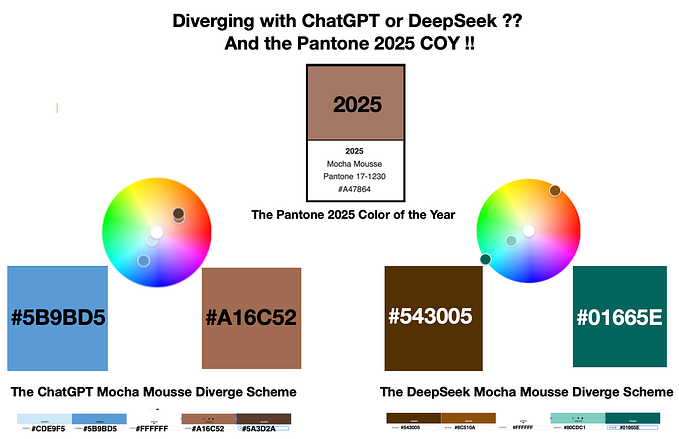Member-only story
Almost a passing Google Gemini qualitative color scheme
What if a GenAI data color scheme marginally addresses color deficiency?

In this writing, I explore if Google Gemini can provide a qualitative color scheme that passes color deficiency tests. A qualitative data color scheme uses distinct colors to label different categories of data. There are no implied magnitude differences between each of the categories and no large variances in lightness or saturation.
As noted by Joachim Goedhart in his writing on “Data Visualization with Flying Colors”, moving to ranges between five and eight distinct colors becomes extremely challenging for individuals with color deficiencies. I decided to investigate if Google Gemini could aid me in finding qualitative color schemes with five distinct colors that pass also color deficiency. My experiments lead me to a surprisingly uncomfortable situation. Let’s get started here by briefly reviewing the concept of color deficiency.
What are Color Deficiencies?
As noted in my prior UX Collective and Nightingale writings on color, humans have three types of photoreceptors or cones. Each is sensitive to different parts of the visual spectrum of light to facilitate rich color vision. A color deficiency happens when one or more sets of cones does not function properly. A red cone deficiency is classified as Protanopia. A green cone deficiency is classified as Deuteranopia. A blue cone deficiency is classified as Tritanopia. Software is available that simulates color deficiencies. I will use Adobe Color’s accessibility check for color blindness as a check for color deficiency for the data color schemes in this writing. As a final check of a selected color scheme applied to a data visualization, I will use Coblis — the Color Blindness Simulator tool.
Now, let’s examine some details about Google Gemini, a Generative AI chatbot, to see how it might facilitate color scheme suggestion.
What is Google Gemini?
On December 6, 2023, Google announced Google Gemini as the official replacement to its earlier Generative AI tool, entitled Bard, and positioned it as a competitor to ChatGPT. Using text-based commands, users can ask the chatbot for assistance in tasks such as…







